

Pine Knoll Apartment Community is located on the east side of Cambridge on Byesville Road. Pine Knoll is conveniently located to I70-77 and is minutes away from shopping centers and restaurants. Pine Knoll Apartment Community features 75 two-bedroom apartment homes, seven of which are handicapped accessible. All apartment homes are furnished with a range, refrigerator, garbage disposal, and laundry hook-ups. Average water and trash removal are paid for by CMHA. An on-site laundry facility is available for resident’s use, as well as our elegant clubhouse. Each apartment home has its own private patio and garden area. Additionally, ample storage space is provided by the attached outside storage area. Twenty-four hour emergency maintenance service is available, as well as twenty-four hour security camera monitoring. Other features include a fitness center, beautifully landscaped grounds, and first-class customer service. Come see for yourself all the good things Pine Knoll Apartment Community has to offer!
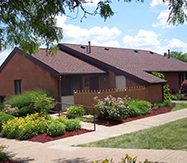
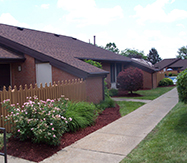
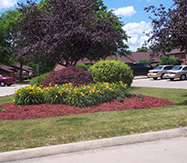
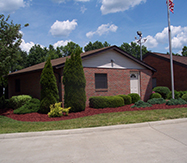
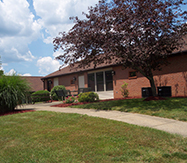
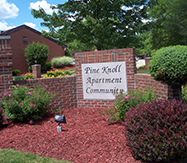
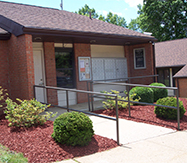
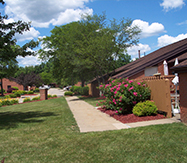
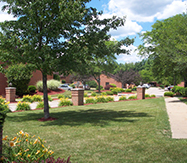
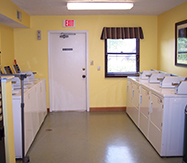
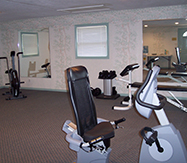
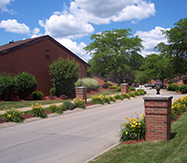
Enjoy a quiet, convenient home that is affordably satisfying. Make the move to Maple Heights where you will find a relaxing lifestyle and be surrounded by friendly neighbors! Maple Heights Apartment Community is beautifully set on the north side of Cambridge at 1100 Maple Court. It is within walking distance of shopping and medical facilities and pharmacies. Maple Heights residents enjoy a recently renovated community room complete with a piano, wide-screen television, and library. For a quiet retreat, residents can enjoy any of the three balconies with beautiful views.
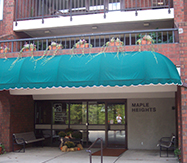
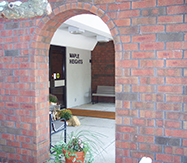

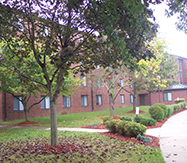
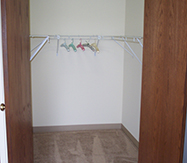
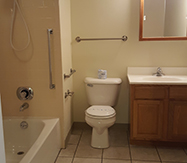
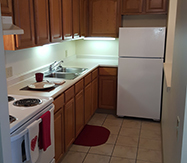
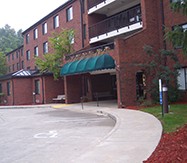
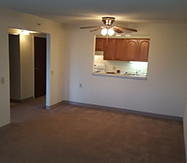
The Cambridge Metropolitan Housing Authority administers a program called the Housing Choice Voucher Program, which enables low-income families to afford decent, safe, and sanitary housing in the private market. This program provides rental assistance for families and single persons who are income eligible. The family pays rent based on their income. On behalf of the family, CMHA pays directly to the landlord, the difference between the family’s portion and the total rent. The family receives a Housing Choice Voucher to assist them with the rental unit of their choice. A family may receive assistance in the dwelling unit they are currently renting, or they may look for another place that better suits their needs. However, before assistance begins, the owner must agree to participate in the Program. This includes maintaining the rental property within federal housing quality standards and charging a reasonable rent. Rental units are inspected prior to admission to the Program, and again annually, to assure they are maintained in a decent, safe, and sanitary condition. Family income and other factors are also reexamined annually. The Housing Choice Voucher Program not only assists low income families with their rent, but it is advantageous to owners because it assures owners a guaranteed monthly payment. The Program is also advantageous to the community because housing inspection standards improve the quality of available rental housing stock in the county.
What is the Housing Choice Voucher Program?
The housing choice voucher program is the federal government’s major program for assisting very low-income families, the elderly, and the disabled to afford decent, safe, and sanitary housing in the private market. Since housing assistance is provided on behalf of the family or individual, participants are able to find their own housing, including single-family homes, townhouses and apartments. The participant is free to choose any housing that meets the requirements of the program and is not limited to units located in subsidized housing projects.
Housing choice vouchers are administered locally by public housing agencies (PHAs). The PHAs receive federal funds from the U.S. Department of Housing and Urban Development (HUD) to administer the voucher program. A family that is issued a housing voucher is responsible for finding a suitable housing unit of the family’s choice where the owner agrees to rent under the program. This unit may include the family’s present residence. Rental units must meet minimum standards of health and safety, as determined by the PHA. A housing subsidy is paid to the landlord directly by the PHA on behalf of the participating family. The family then pays the difference between the actual rent charged by the landlord and the amount subsidized by the program.
Who is eligible for the Housing Choice Voucher Program?
Eligibility for a housing voucher is determined by the PHA based on the total annual gross income and family size and is limited to U.S. citizens and specified categories of non-citizens who have eligible immigration status. In general, the family’s income may not exceed 50% of the median income for the county or metropolitan area in which the family chooses to live. Median income levels are published by HUD and vary by location.
How do Housing Vouchers function?
The housing choice voucher program places the choice of housing in the hands of the individual family. A very low-income family is selected by the PHA to participate is encouraged to consider several housing choices to secure the best housing for its needs. A housing voucher holder is advised of the unit size for which it is eligible based on family size and composition.
The housing unit selected by the family must meet an acceptable level of health and safety before the PHA can approve the unit. When the voucher holder finds a unit that it wishes to occupy and reaches an agreement with the landlord over the lease terms, the PHA must inspect the dwelling and determine that the rent requested is reasonable.
HUD sets the payment standard at an amount generally needed to rent a moderately-priced dwelling unit in the local housing market and that is used to calculate the amount of housing assistance a family will receive. However the payment standard does not limit the amount of rent a landlord may charge or the family may pay. A family which receives a housing voucher can select a unit with a rent that is below or above the payment standard. The housing voucher family must pay 30% of its monthly adjusted gross income for rent and utilities, and if the unit rent is greater than the payment standard the family is required to pay the additional amount. By law, whenever a family moves to a new unit where the rent exceeds the payment standard, the family may not pay more than 40 % of its adjusted gross monthly income for rent.
How is rent subsidy calculated?
The PHA calculates the maximum amount of housing assistance allowable. The maximum housing assistance is generally the lesser of the payment standard minus 30% of the family’s gross monthly adjusted income or the gross rent for the unit minus 30% of gross monthly adjusted income.
Who establishes the contract rent for the program?
Owners may request any reasonable rent for their units. The PHA must make a rent reasonableness determination by comparing the rent being charged by the owner to rents for comparable unassisted units in the area and to rents being charged by the owner for comparable, unassisted units on the premises.
If the proposed rent is determined to be too high and does not meet the rent reasonableness limitation, the PHA will engage in negotiations with the owner and attempt to reduce the contract rent. If the owner does not wish to accept a lower rent then the paperwork on the unit will be cancelled and the family must look for a new unit. For this reason, it is recommended that the owner should not allow the family to move into the unit prior to the rent being established.
Who is responsible for any security deposit?
The cost of the security deposit is not covered under the Housing Choice Voucher Program. The family is responsible for any security deposit requested by the owner.
Which units qualify for subsidy under the Housing Choice Voucher Program?
Under the voucher program, new voucher-holders may choose a unit anywhere in the United States if the family lived in the jurisdiction of the PHA issuing the voucher when the family applied for assistance. Those new voucher-holders not living in the jurisdiction of the PHA at the time the family applied for housing assistance must initially lease a unit within that jurisdiction for the first twelve months of assistance. A family that wishes to move to another PHA’s jurisdiction must consult with the PHA that currently administers its housing assistance to verify the procedures for moving.
Can a family move and continue to receive housing choice voucher assistance?
The housing choice voucher program is designed to allow families to move without the loss of housing assistance, however, there are certain prerequisites that must be met. It is best to contact a PHA representative directly for specific answers to questions in regard to moving within the housing choice voucher program.
What are the roles for the tenant, the landlord, the housing agency, and HUD?
Once a PHA approves an eligible family’s housing unit, the family and the landlord sign a lease and, at the same time, the landlord and the PHA sign a housing assistance payments contract that runs for the same term as the lease. This means that everyone, tenant, landlord and PHA, has obligations and responsibilities under the voucher program.
Tenant’s Obligations: When a family selects a housing unit, and the PHA approves the unit and lease, the family signs a lease with the landlord for at least one year. The tenant may be required to pay a security deposit to the landlord. After the first year the landlord may initiate a new lease or allow the family to remain in the unit on a month-to-month lease.
When the family is settled in a new home, the family is expected to comply with the lease and the program requirements, pay its share of rent on time, maintain the unit in good condition and notify the PHA of any changes in income or family composition.
Landlord’s Obligations: The role of the landlord in the voucher program is to provide decent, safe, and sanitary housing to a tenant at a reasonable rent. The dwelling unit must pass the program’s housing quality standards and be maintained up to those standards as long as the owner receives housing assistance payments. In addition, the landlord is expected to provide the services agreed to as part of the lease signed with the tenant and the contract signed with the PHA.
Housing Authority’s Obligations: The PHA administers the voucher program locally. The PHA provides a family with the housing assistance that enables the family to seek out suitable housing and the PHA enters into a contract with the landlord to provide housing assistance payments on behalf of the family. If the landlord fails to meet the owner’s obligations under the lease, the PHA has the right to terminate assistance payments. The PHA must reexamine the family’s income and composition at least annually and must inspect each unit at least annually to ensure that it meets minimum housing quality standards.
HUD’s Role: To cover the cost of the program, HUD provides funds to allow PHAs to make housing assistance payments on behalf of the families. HUD also pays the PHA a fee for the costs of administering the program. When additional funds become available to assist new families, HUD invites PHAs to submit applications for funds for additional housing vouchers. Applications are then reviewed and funds awarded to the selected PHAs on a competitive basis. HUD monitors PHA administration of the program to ensure program rules are properly followed.
What other programs are offered through the Housing Choice Voucher Program?
The Family Self Sufficiency Program was established to help Housing Choice Voucher Program participants become economically self-sufficient. The “path to self-sufficiency” varies for each Family Self Sufficiency Participant and can include goals such as going back to school, finding a better paying job, getting bills under control, or buying a house! The Family Self Sufficiency (FSS) Program can help you make these plans become a reality! Let us help you along your path to self-sufficiency. Please contact the Housing Authority for more information.
Have any questions about the voucher program? Want an application? Just contact us!
The mission of the Cambridge Metropolitan Housing Authority is to provide the best quality service to the applicants, residents, and landlords of our three-county area, in addition to ensuring safe, decent, and affordable housing.
In order to achieve this mission, we will:
Perform our services in a pleasant, polite, and timely manner to all who telephone or visit our agency.
Be honest and trustworthy when assisting the communities, thereby setting a work ethic that others will want to follow.
Aid applicants by providing information and referrals if necessary, and treat each individual fairly and consistently throughout the application process.
Be dedicated to bettering the communities by insuring that we improve the quality of stock housing in each.
Strive to satisfy our residents by performing work orders and replacements with quality material as well as quality workmanship.
Search out new opportunities for the planned expansion of services; either by developing them ourselves or by collaboration with other service providers.
Nurture working relationships with all who interact with the entity known as the Housing Authority, including but not limited to: Department of Housing and Urban Development, staff, assisted housing residents, state and local officials, social service providers, and with the business community.
Effectively and efficiently implement, evaluate, monitor, and control all Housing Authority programs and administration.
Cambridge Metropolitan Housing Authority is located at 1100 Maple Court, Cambridge, OH 43725. Office hours are Monday, Tuesday, Thursday and Friday 8:30–4:30, closed 12-1 for lunch. The offices are closed to the public on Wednesdays. CMHA is an equal opportunity employer and housing provider. EHO/EOE